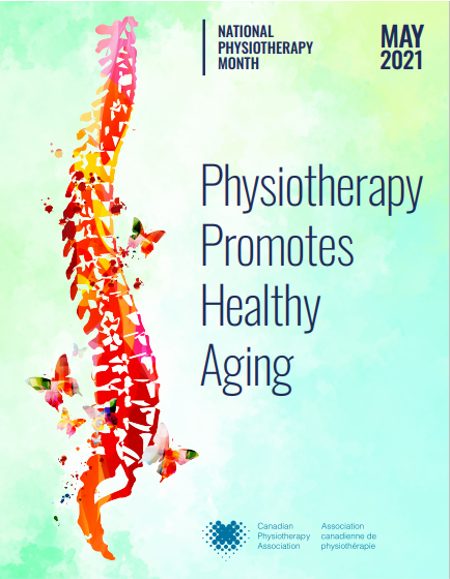
Physiotherapy helps people delay the need for joint replacement and can help people prepare for and recover from joint replacement surgery
- Physiotherapy-led exercise interventions can reduce pain and improve physical function for those waiting for surgery.
- Post-surgery physiotherapy reduces pain.
- Post-surgery physiotherapy increases range of motion.
- Physiotherapy reduces costs by delaying or decreasing the need for surgery.
Physiotherapists play an important role in supporting Canadians who are waiting for, undergoing, and recovering from a number of orthopaedic surgeries.
In particular, physiotherapy interventions in patients anticipating total knee and hip replacements are significant and can result in:
- improved health outcomes,
- shorter hospital stays,
- earlier and faster recoveries,
- and cost reductions.1
Patients report strong satisfaction rates when physiotherapists are involved in their recovery post-surgery.2 They also respond favourably to pre-surgical physiotherapy training programs.3
Strong evidence exists to support physiotherapy in joint replacements:
- from pre-operative education
- to inpatient rehabilitation
- and community-based services.
Overall, effectiveness studies indicate that patients who underwent joint replacement and participated in physiotherapy programs experienced improved outcomes with the greatest health gains achieved from early intervention, starting rehabilitation 24 hours post-surgery.4
Inclusion of physiotherapy in the continuum of care significantly reduces treatment costs. Examples of positive health outcomes and cost-benefits of physiotherapy related to joint replacement surgery prevention, preparation, and recovery include:
- Exercise-based physiotherapy interventions can reduce pain and improve physical function for people waiting for a hip replacement surgery.5
- Post-operatively, studies show that those who participated in physiotherapy programs experienced improved outcomes, such as reduced pain and increased joint range of motion.6
- Physiotherapy can delay or decrease the need for surgical intervention through appropriate conservative management, resulting in cost savings to the health care system.7
- Physiotherapy triage of patients referred for surgery provides a greater number of care options and improves patient satisfaction.8
- Physiotherapy screening and triage of patients referred for surgery reduces costs by decreasing the number of inappropriate specialist referrals; with 34% of patients not requiring surgery.8

Read more about the role of physiotherapy in helping people prepare for, and recover from, joint-replacement surgery here.
References
[1] Coudeyre, E., Jardin, C., Givron, P., Ribinik, P., Revel, M., & Rannou, F. (2007, April). Could preoperative rehabilitation modify postoperative outcomes after total hip and knee arthroplasty? Elaboration of French clinical practice guidelines. Ann Readapt Med Phys, 50(3), 189-97. doi: 10.1016/j.annrmp.2007.02.002
[2] Dorr, L.D. & Chao, L. (2007, October). The emotional state of the patient after total hip and knee arthroplasty. Clin Orthop Relat Res., 463, 7-12. PMID: 17960669.
[3] Herck, P.V., Vanhaecht, K., Deneckere, S., Bellemans, J., Panella, M., Barbieri, A., & Sermeus, W. (2010, February). Key interventions and outcomes in joint arthroplasty clinical pathways: a systematic review. Journal of Evaluation in Clinical Practice, 16(1), 39–49. doi: 10.1111/j.1365-2753.2008.01111.x
[4] Canadian Physiotherapy Association. (2012). The Value of Physiotherapy | Joint Arthoplasty [PDF file]. Retrieved from https://physiotherapy.ca/sites/default/files/valuePT/cpa_valuept_jointarthroplasty-en.pdf
[5] Gill, S.D. & McBurney, H. (2013, January). Does exercise reduce pain and improve physical function before hip or knee replacement surgery? A systematic review and meta-analysis of randomized controlled trials. Archives of Physical Medicine and Rehabilitation, 94(13), 164–76. doi: 10.1016/j.apmr.2012.08.211
[6] Grotle, M., Garratt, A.M., Klokkerud, M., Løchting, I., Uhlig, T., & Hagen, K.B. (2010, January). What’s in team rehabilitation care after arthroplasty for osteoarthritis? Results from a multicenter, longitudinal study assessing structure, process, and outcome. Physical Therapy, 90(1), 121–31. doi: 10.2522/ptj.20080295
[7] Oldmeadow, L.B., Bedi, H.S., Burch, H.T., Smith, J.S., Leahy, E.S., & Goldwasser, M. (2007, June 18). Experienced physiotherapists as gatekeepers to hospital orthopaedic outpatient care. Med J Aust., 186(12), 625-628. doi: 10.5694/j.1326-5377.2007.tb01079.x
[8] Aiken, A.B., Harrison, M.M., Atkinson, M., & Hope, J. (2008). Easing the burden for joint replacement wait times: the role of the expanded practice physiotherapist. Healthcare Quarterly, 11(2), 62-66. doi: 10.12927/hcq.2008.19618
Provided by Canadian Physiotherapy Association